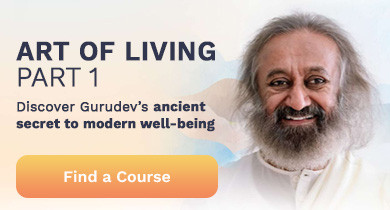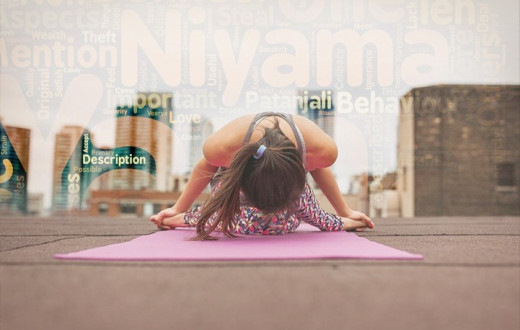By Sriram Sarvotham┃Posted: April 17, 2019
Most of the well-known styles of yoga that include postures, breathing practices and meditation can be classified under the umbrella of Hatha Yoga. While any means or technique (exercise, devotion, service, etc) that leads one to a state of harmony with oneself can qualify as a yoga practice, the term Hatha Yoga refers to the system of postures, purification, breathwork and meditation as described in the classic Hatha Yoga texts such as the Hatha Yoga Pradipika.
The word Hatha literally means union of the sun and moon; the Sanskrit term “ha” means sun and “tha” means moon. We can think of Hatha Yoga as a process of heating and cooling the system. Hatha Yoga promotes energy, strength, and vitality (qualities of the sun); at the same time it allows the practitioner to experience relaxation, rest, and rejuvenation (qualities of the moon). Therefore it provides the practitioner with a harmonious blend of seemingly opposite yet complementary aspects of activity and rest.
What is the magic behind Hatha Yoga?
How does heating and cooling the system work to provide exuberant health and well-being? I like to think of Hatha Yoga as similar to the process of annealing in metallurgy. Annealing is a technique involving heating and controlled cooling of a material to increase the size of its crystals and reduce their defects. The heat causes the atoms to become unstuck from their initial positions (a local minimum of the internal energy) and wander randomly through states of higher energy; the slow cooling gives them more chances of finding configurations with lower internal energy than the initial one, promoting the growth of crystals.
The concept of annealing has been used beyond metallurgy; for example, the same principle is used routinely in simulated annealing to solve global optimization problems in practical settings. See here for an example of how simulated annealing works to rearrange pixels of an image to create beautiful patterns similar to crystal structures.
How the practice of Hatha Yoga is similar to the process of annealing
The “Ha” (sun) part of Hatha Yoga involves active practices that can be thought of as introducing energy and heat in the system. In fact, the word “tapas,” which is used to describe discipline in yoga, literally means heat. By introducing this heat, we remove the impurities in the system and strengthen it. Just like in annealing, where heat causes the atoms to become unstuck from their initial positions, heat due to tapas causes the body and mind to become unstuck from habitual patterns.
For example, many of us hold unnecessary tension in muscles (especially in the shoulders and neck) because of stress; this pent-up energy is released as we introduce heat through the practice of yoga postures. Likewise in the mind, we allow tension and anxiety to grip the mind in daily life; this unnecessary expenditure of energy is released during the practice of yoga.
The “Tha” (moon) part of Hatha Yoga includes relaxation, meditation, and other “cooling” practices. This is where we unwind and allow the mind and body to find their place of deep relaxation. As in annealing, where the controlled cooling that follows the initial heating gives rise to harmony & structure (in the form of crystals), the relaxation/meditation done at the end of yoga gives rise to harmony and a profound sense of well-being. Furthermore, just as slow cooling in annealing gives the atoms more chances of finding configurations with lower internal energy than the initial one, yogic relaxation takes us to a place of deeper relaxation than before. In other words, as we unwind more, there’s greater reduction of stress.
Mere cooling alone won’t produce crystal formation in annealing – the atomic structure remains the same. Similarly, attempting to relax the body and mind without offering activity first will only promote lethargy! Perhaps that’s why it’s said in yoga, that we move from tamas (dullness) to sattva (clarity) by first moving through rajas (activity). These three states are known in Sanskrit as the gunas.
For the yoga practitioner
If you’re reading this, chances are you already practice yoga; I’m sure you’ve experienced the depth of relaxation at the end of a yoga session. As a yoga teacher, I’ve observed that the 10 to 15 minutes of relaxation after a well-rounded practice of postures brings everyone deep rest. Even those prone to fidgeting and restlessness experience profound relaxation and stillness.
The same thing can be said for meditation. When we attempt to be in meditation without doing active practices, unless we’re experienced meditators, we find ourselves stuck in the tendencies of the mind and body (“local minimum”). We experience uncontrolled thoughts, worries, and anxieties. We observe the discomforts of the body, and endure forced silence. While meditation performed this way certainly has its benefits, we can boost the quality of meditation by doing active practices first. When combined this way, the practice of postures followed by meditation culminates in deep silence and tranquility, accompanied by blissful rest and rejuvenation.
One can imagine the long-term benefits of practicing Hatha Yoga. When we introduce this practice in our daily lives, we allow an inner transformation to happen that takes us from a place of chaos to clarity — like the clarity of the crystals we produce from annealing. Allow me to conclude with a powerful quote from Neale Donald Walsch’s book Communion with God, which captures the essence of why Hatha Yoga is so beneficial:
“The combination of exercise and meditation is extremely powerful. When this combination becomes part of your spiritual discipline, you create possibilities for enormous growth.”
This article was originally published on Sriram’s Blog and is re-posted here with the author’s permission.
New to yoga? Explore Yoga 101: A Simple Guide to Practice and Philosophy to Help A Beginner.
Shriram Sarvotham, a yoga teacher since 1991, holds a Ph.D. degree in Electrical Engineering from Rice University, Houston, TX. He works in the tech industry in Silicon Valley California.





























